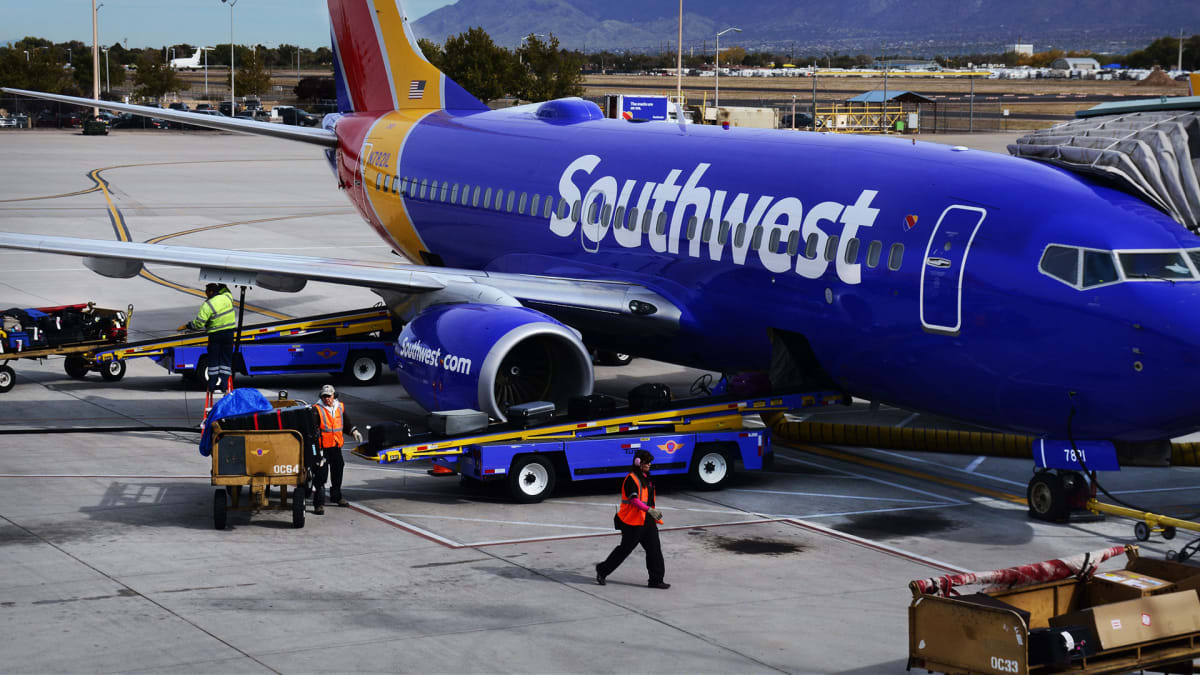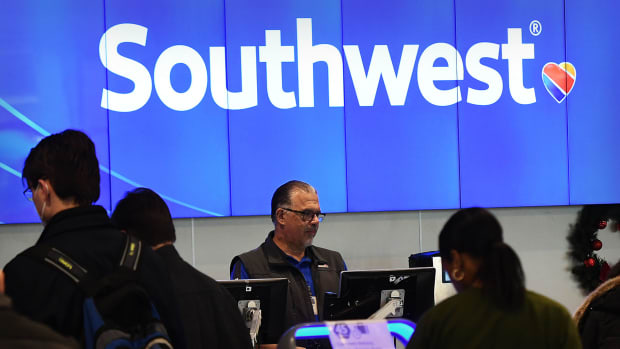
Southwest Airlines (LUV) needs some good news. After the past few months, you would think that the airline was actually named "Embattled Southwest Airlines."
After its holiday meltdown and amidst labor problems with its pilots and flight attendants, the struggling company has burned through its goodwill with both its customers and its employees. That's an especially big problem because Southwest's business model for decades involved being the company with happy employees who delivered top-tier customer service.
DON'T MISS: Southwest Airlines Makes Customers a Very Generous Offer
Now, as the once-beloved airline tries to make its way back from stranding tens of thousands of passengers during the holiday season, Southwest has been trying a lot of ideas. Some of those are behind-the-scenes software solutions designed to make sure that nothing like its December problems ever happens again.
Other changes, however, are more customer-facing. The airline has been testing a number of ideas to get passengers on and off planes faster at Atlanta's Hartsfield-Jackson International Airport. The airline's innovation team has actually been using four of its 18 gates at the very busy airport to field-test new ideas.
Some of those simply make sense. Southwest has been seen using improved stanchions to speed boarding and has added self-serve kiosks at the gate to allow the gate agents to focus on bigger issues that need a human touch.
"On the Innovation testing, our boarding stanchion elements include integrated screens to inform passengers of gate information, announcements, and boarding process directions," the airline shared in an email to TheStreet.
One change, however, relies on psychology, and it's not something you would expect.

Paul Hennessy/Anadolu Agency via Getty Images
Southwest Wants To Get You Onboard Faster
Southwest's innovation team has been looking at choke points in the boarding process. The kiosks address one in freeing up human gate agents to solve larger problems and the new stanchions should help convey which group (A, B, or C) should be lining up at any given time.
The other point in both the boarding and deplaning process is the jetway. That area tends to grind to a halt as passengers don't move with any sort of urgency.
Southwest has a unique solution to that problem, according to a report from The Point Guys. The airline has installed Bluetooth speakers in the jet bridge which allows Southwest to play music -- disco, electronic dance music, hip-hop, and kids music -- during boarding and deplaning.
"Listening to music at a high beats-per-minute rate is scientifically proven to get people moving faster and more efficiently, according to innovation team member Kaci McCartan, which is exactly what Southwest wants during one of the most critical phases of the turn" the website reported.
The speakers also allow the airline to make announcements telling passengers that overhead bin space has run out or that there are only middle seats left.
Southwest Adds a New Technology Partner
Getting people on and off its planes may help, but it won't address the core reasons Southwest's systems failed during its meltdown. The airline, however, has taken a major step toward doing that by tapping Amazon (AMZN) and its Amazon Web Services for its preferred cloud provider as the airline advances its digital transformation initiative.
“As our preferred cloud provider, AWS will offer solutions that are critical in our drive to modernize our operation, equip our employees with the tools they need to serve our customers, and improve our reliability,” said Southwest Chief Information Officer Lauren Woods in a press release. “With the help of AWS’s leading cloud technology and expertise, we will launch improved digital solutions, responsive customer support, and streamlined operations as we deliver on our digital transformation initiatives.”
Southwest wants to leverage AWS to "next-generation customer service and employee tools in a test-and-learn capacity through their Innovation Lab powered by AWS."
The airline recently built a secure system that gathers and stores pricing and flight shopping data using AWS Lambda. Using AWS, "the new system was able to handle the scale and processing needed to offer competitive fare recommendations," according to Amazon.
"This large-scale modernization with AWS is part of the airline’s long-term plan to enhance the passenger journey, optimize operations, and efficiently invest in information technology (IT) infrastructure," the airline added.







